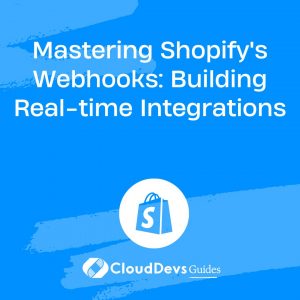How to use GraphQL with Shopify
Introduction to GraphQL in Shopify
GraphQL is a powerful query language for APIs, allowing clients to request exactly the data they need and nothing more. In the context of Shopify development, GraphQL offers a more efficient, flexible, and powerful way to interact with Shopify’s data compared to traditional REST APIs. This article explores how to harness the power of GraphQL for advanced Shopify development, providing practical examples and strategies.
Benefits of Using GraphQL in Shopify Development
GraphQL offers several advantages over REST when working with Shopify:
- Precise Data Fetching: Request only the data you need, reducing the amount of data transferred.
- Nested Queries: Fetch related resources in a single request, minimizing the number of API calls.
- Schema-Driven Development: Explore and interact with your data model dynamically using GraphQL’s introspection capabilities.
1. Getting Started with Shopify’s GraphQL API
Shopify provides a robust GraphQL API for developers. To begin using GraphQL with Shopify, you need to:
- Authenticate: Use Shopify’s OAuth 2.0 to authenticate your app and obtain an access token.
- Query the API: Use GraphQL queries to fetch the data you need.
Example: Fetching Product Data with GraphQL
Here’s a basic example of how to fetch product data using GraphQL:
```graphql
{
products(first: 5) {
edges {
node {
id
title
descriptionHtml
variants(first: 5) {
edges {
node {
title
price
}
}
}
}
}
}
}
```
In this query, you request a list of products along with their variants, demonstrating how GraphQL allows you to fetch nested resources efficiently.
2. Advanced Queries and Mutations
GraphQL isn’t just for fetching data; you can also perform mutations, which allow you to create, update, or delete resources.
Example: Updating Product Prices
Here’s how you might update the prices of products using a GraphQL mutation:
```graphql
mutation {
productVariantUpdate(input: {
id: "gid://shopify/ProductVariant/1234567890",
price: "29.99"
}) {
product {
id
title
variants(first: 5) {
edges {
node {
title
price
}
}
}
}
}
}
```
This mutation updates the price of a specific product variant and returns the updated product data.
3.Optimizing Performance with GraphQL
While GraphQL is powerful, it’s essential to use it efficiently to avoid performance pitfalls:
- Batching and Caching: Use Shopify’s built-in batching and caching mechanisms to reduce the load on your API.
- Query Complexity: Be mindful of the complexity of your queries to avoid excessive resource consumption.
- Error Handling: Implement robust error handling to manage partial failures and ensure a smooth user experience.
4. Integrating GraphQL with Shopify Apps
If you’re building custom Shopify apps, integrating GraphQL can significantly enhance their capabilities:
- Dynamic UIs: Use GraphQL to power dynamic, data-driven user interfaces that respond to real-time changes.
- Custom Reports: Generate custom reports by querying Shopify’s GraphQL API for specific business metrics.
- Automation: Automate workflows by triggering mutations based on events in your store.
Example: Automating Inventory Management
Here’s an example of how you might automate inventory management using GraphQL:
```graphql
mutation {
inventoryAdjustQuantity(input: {
inventoryLevelId: "gid://shopify/InventoryLevel/1234567890",
availableDelta: -5
}) {
inventoryLevel {
id
available
}
}
}
```
This mutation reduces the inventory quantity for a specific product by 5 units, demonstrating how GraphQL can be used to automate store operations.
Conclusion
GraphQL is a game-changer for Shopify development, offering unparalleled flexibility and efficiency in data access and manipulation. By mastering GraphQL, you can create more dynamic, responsive, and scalable Shopify stores that meet the demands of modern e-commerce.
Further Reading
Table of Contents









